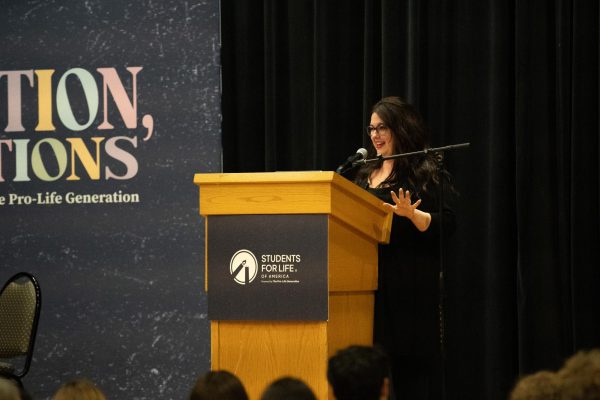Stamatakis: Private donations don’t come without restrictions
October 5, 2011
As the Pitt community gets used to the newly named Kenneth P. Dietrich School of Arts and… As the Pitt community gets used to the newly named Kenneth P. Dietrich School of Arts and Sciences and the giant banner industry finishes counting its money from the recent printing bonanza, it’s a good time to think about what large donations like Dietrich’s actually mean, and how they might be changing the way everything is taught at a college level.
On the surface, replacing public funding with private donations at a time when the state is quickly retreating from its educational commitments seems like a relief — like that feeling you get when your magician uncle pulls the tablecloth out from underneath a placement of fine china. Sure, it’s a traumatic change, but at least you still have support for your wine glasses and gravy boats if the trick is done properly.
But there’s an issue if the sheet turns out to have been hiding some uncomfortable truths. When the cloth of government subsidies is pulled away, the privately funded table underneath might not look as nice. There could be parts with double-layered mahogany and other places that are rotting and soggy. Some plates could come crashing to the floor because there are actually holes in the table.
Ultimately, it’s the different areas of application for this money, not the changing source of support, that might be most frightening.
A dollar from the state is not the same as a dollar from a private group — there’s far less of a guarantee of even distribution. Unlike the state, which essentially offers a set amount of wood and nails for a college to build a table as it wishes, private companies, charitable organizations and individual donors like Dietrich give money with specific schematics about the table they want.
Their general instructions are somewhat predictable. According to Associate Vice Chancellor Tom Crawford, “corporations are usually interested in research efforts or in funding student projects,” while nonprofits “usually have very targeted giving programs and are more interested in specific projects that have a community or social impact.” Individuals, on the other hand, target “scholarships, fellowships and professorships.”
In other words, people want to make sure they’re supporting something they care about that will return valuable goods. In the case of a nonprofit, the table might support a centerpiece that brings happiness to the room. A corporation might support the salad over the turkey because it wants people fit for light socializing after the meal. A single donor might favor croutons and ranch just because he likes croutons and ranch.
Pitt, which is in the final stages of its $2 billion fundraising campaign, is already contending with these specifics. As of this summer, before the big donation, 45 percent of its endowment funds had external donor restrictions, according to the University’s 2011 Financial Report. $1.1 billion of the University’s assets are already being specifically targeted to certain programs and third-party projects.
This usually benefits applied sciences, athletic and outreach programs, while more “academic” pursuits often lose.
The implications of such donations are almost endless. Is there an intrinsic value to knowledge, or is the only value its application? If it’s about application, should colleges go the way of firms and become extra-specialized to provide the most return? And if another philanthropist offered money to change our mascot from Roc to a squirrel named Pete, how much would he need to give?
But I think one of the most fascinating reforms happening in higher education is the scrambling of certain programs to show that they have value to the world.
Take philosophy, probably the most criticized for having the least applicable — or even testable — value. In the newly developed Experimental Philosophy field, however, philosophers use social science methodology to try to give their work an empirical basis.
Instead of thinking about the definition of consciousness and using logic, an experimental philosopher tries to prove it by studying folk art, for example. In a data-driven world, this is the kind of work that proves of value to potential donors. Old professors emeriti in elbow-padded smoking jackets across the country are now jumping up and down with data, trying to justify the relevance and power of their profession to potential donors. A whole field has been transformed.
Similar movements are occurring in other fields like ethics and game theory. To show value, departments can’t just say they’re valuable. They have to show it to fight for money.
While many may find this cheapening, asking academic programs to actually put theories to the test and have some usefulness to the world isn’t a terrible thing. I don’t think this equates to rich people using colleges as supermarkets for mental pleasures or corporations using universities for job training. Instead, it encourages schools to make an impact. A room full of smart people doesn’t make the world better unless the world supports them.
The cake fork and dessert spoon would find a way to make themselves more useful if there was a chance they wouldn’t get to stay on the table.
If you have any analogies involving an uncle being awesome, email Nick at [email protected]







